Australian Tropical Rainforest Plants - Online edition
Piper macropiper Pennant
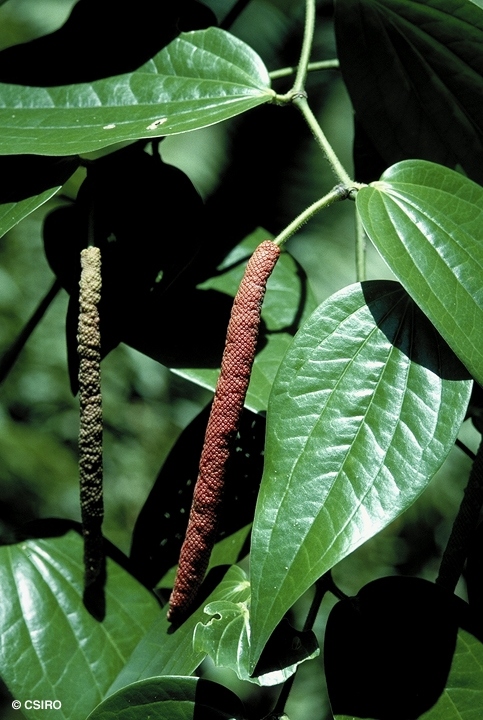
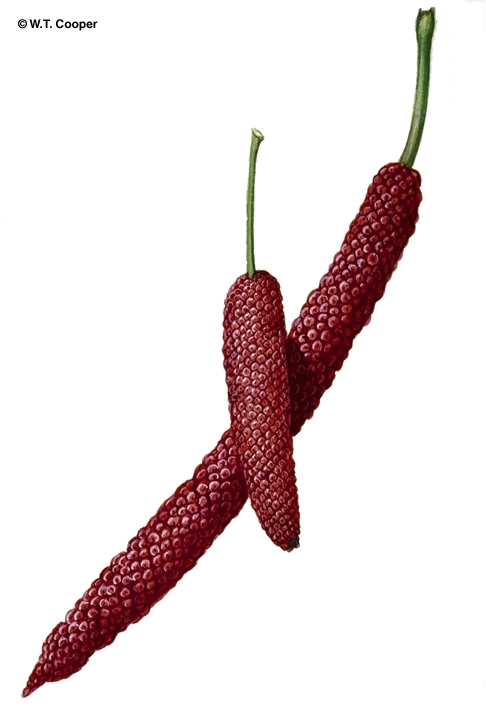
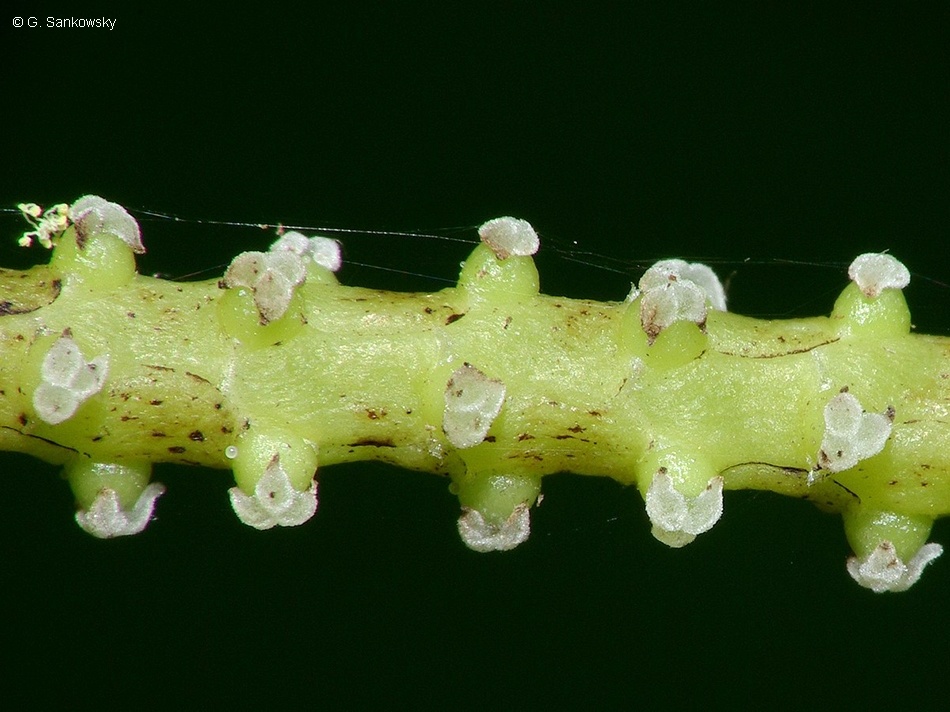

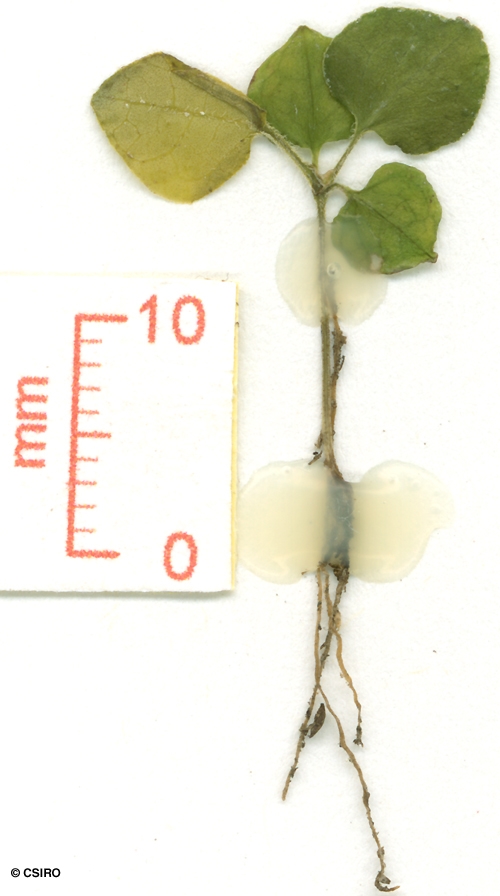


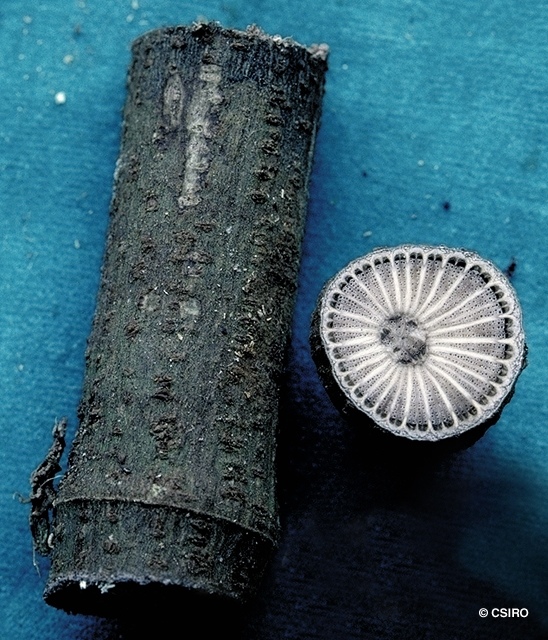
Pennant, T. (1800) Outl. Globe 4: 242. Type: Indonesia, Moluccas; illustration in Rumphius, Herb. Amboin. 5: t. 28 fig. 1 (1747).
Vine stem diameters to 8 cm recorded. Blaze odour strong and spicy or difficult to describe. Blaze darkens on exposure.
Leaf blades much paler and slightly glaucous on the underside. Leaf blades about 8-20 x 4-10 cm, petioles about 0.5-1.5 cm long. Stipules about 8-20 mm long, attached to the base of the petiole on young leaves but soon withering and shed. Twigs, and in particular the twig bark, aromatic when cut or broken. Usually 5 or 6 major veins (including the midrib) arise near the base of the leaf blade and radiate upwards. In addition one major vein departs from the midrib at a low angle about 1 cm from the base of the leaf blade. Oil dots visible with a lens in the body of the leaf blade and also along the veins where they are often particularly obvious. Base of the leaf blade auriculate on one side of the petiole but not on the other. 'Oak grain' in the twigs.
Inflorescence about 9-13 cm long on a peduncle about 2-4 cm long. Spikes mainly composed of closely packed peltate bracts. Female flowers: Ovary about 1 mm high, subtended by a basal, peltate bract about 0.8-1 mm diam. Ovary unilocular. Style absent. Stigma 3-lobed, clothed in short, bristle-like appendages. Ovule 1.
Infructescence about 14-15 cm long on a stalk about 3-4 cm long. Individual fruits about 2.5 x 1.5 mm, closely packed together in dense finger-like spikes. Seeds ellipsoidal, about 2 mm long. Embryo apical, small and inconspicuous.
Cotyledons +/- orbicular, about 5-6 x 4-7 mm, apex mucronate. First leaves cordate, underside clothed in hairs, upper surface sparsely clothed or almost glabrous. Internode lengths very short so that the cotyledons and first leaves are almost in a whorl. At the tenth leaf stage: leaf blade cordate, apex acute, base auriculate to cordate. Venation palmate, lateral veins 2 or 3 on each side of the midrib, midrib raised on the upper surface. Hairs present on the midrib and veins on the underside of the leaf blade and the midrib on the upper surface. Stipules hairy, caducous, about 8 mm long, enclosing the terminal bud, attached to the petiole and stem, leaving a scar when shed. Upper surface of each petiole marked with an elongated triangular scar. Oil dots small, more obvious close to the margin of the leaf blade. Adventitious roots usually present, leaf-opposed, emitting a spicy odour when crushed. Hairs on the stems and petioles arranged in discrete longitudinal lines. Seed germination time 41 to 67 days.
Not often cultivated but has potential because of the unique leaves and the slender red fruits.





